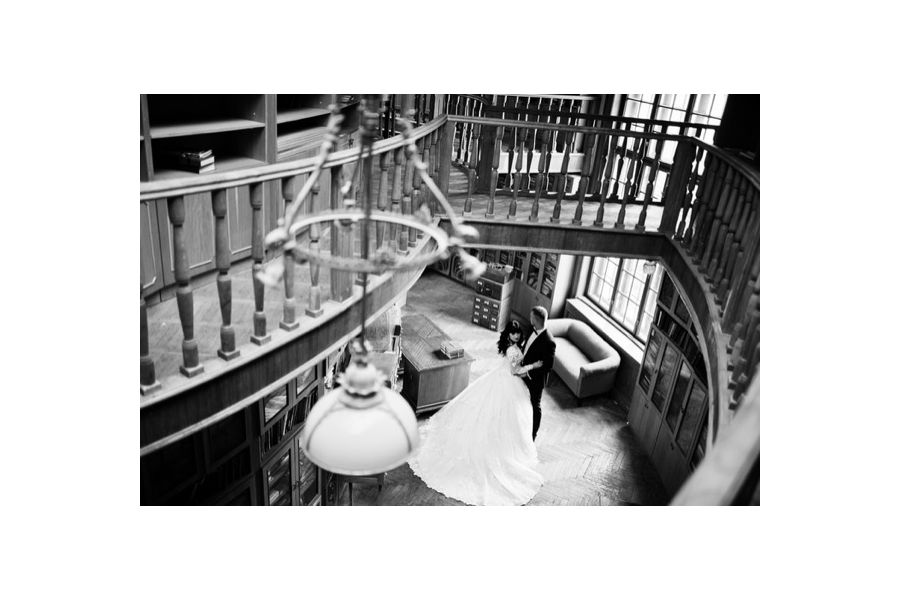This Old Dress

Maybe it took you 30 years to find the right man, but you knew from the age of eight that you’d be wearing your grandmother’s amazing 1950s strapless, ankle-length wedding dress with an hourglass silhouette, full circle skirt and a Chantilly lace bolero. You’re not alone. Deedee Vicory, owner of The Wedding Seamstress in Arvada, Colo., has seen a recent increase in women coming in with older dresses to be altered, both heirlooms and vintage gowns bought at resale stores or online. “These economic times are calling for something a little different,” says Vicory. “But it’s perfect because the current trend in wedding dress design is a nostalgic aesthetic anyway.”
Some brides want the dress to look as authentic as possible, requiring only a few nips, tucks and replacements. But others want, or need, a total overhaul. Perhaps your gown’s been stuffed in a box for 55 years and hasn’t seen the light of day since 1987. Now you have three issues on your hands: Is the dress wearable? Will it be ready in time? Will you actually like how you look in it?
Not to worry – just get started early and take the transformation step by step. First, take your dress to a specialty cleaner to make sure that it’s suitable for wearing. Keepsakes Wedding Gown Preservation in Kailua, Hawaii, cleans and preserves approximately 500 wedding gowns a year. Each gown is handled individually by professionals who are experienced in caring for delicate fabrics, laces and trims. “We look at the integrity of the fabric, including uneven yellowing, stains, rusty metal parts, holes and especially the seams,” says Keepsakes’ managing partner, Gabriela Quaid. “What with getting up and down, dancing, cultural rituals, etc., wedding gowns go through a lot of stress, and this one will be doing double duty. You don’t want to hug an uncle and have your sleeve fall off.”
Keepsakes has a secret modified method for cleaning older gowns, which includes going over it by hand with a fine tooth comb looking for any indication that the integrity is lacking. Because it can be a very slow, delicate process, it’s important to bring a dress in early so that the cleaner can make a timely assessment of the cost and end-product. Cleaning may, in fact, end up doing more harm than good to a matured gown. “I’ve seen dresses in which the thread was so old that if you moistened it with solvent or cleaning solution, it would dissolve,” says Quaid. Cleaning may also tarnish or damage old embellishments.
At Keepsakes, prices for cleaning and minor mending and repair can start around $110. And again, make sure you bring the dress in ASAP, just in case you need to go with a backup plan.
“Brides are often particular – they want their wedding dress to be perfect,” says Quaid. “But with an old dress, you have to weigh perfection against the sentimental value. Even master cleaners aren’t magicians and if a stain is 60 years old, there’s a good chance it isn’t going anywhere.”
Once you’ve decided if you can deal with the fabric, it’s time to take your favorite frock to a seamstress. Since this person will be cutting into something that can never be replaced, be sure you do a little vetting first and ask to see examples of her previous work to make sure she is confident and experienced, recommends Vicory. This is even more important if the work will be extensive, such as reshaping a bodice, altering a skirt’s shape, cutting a new back or neckline, moving lace or changing a sleeve. Also, when brainstorming your new design, be aware that even well-preserved old fabric will usually have a permanent yellow caste to it, which can make it very difficult to color-match if you want to add new material or embellishments. Most seamstresses will cut the train or shorten a hemline to gain extra fabric for changes, but you can also experiment with soaking new fabric with tea bags to give it an aged look.
As to cost, if revamping an old dress, prepare to pay out at least $300 to $400, although pricing will depend on the amount of work and level of difficulty. And keep in mind that it can take four to five months to reconstruct a dress, so, once again, make sure you allow ample time.
“I like to have the dress back to the bride one month before the wedding so that she has one less thing to worry about,” says Vicory. “Plus, there’s always a chance she might, like most brides, try to lose those last-minute pounds and need some last-minute alterations.”
Which makes you wonder if your grandmother was worried about the same thing when she wore the dress the first time?
© Brides365